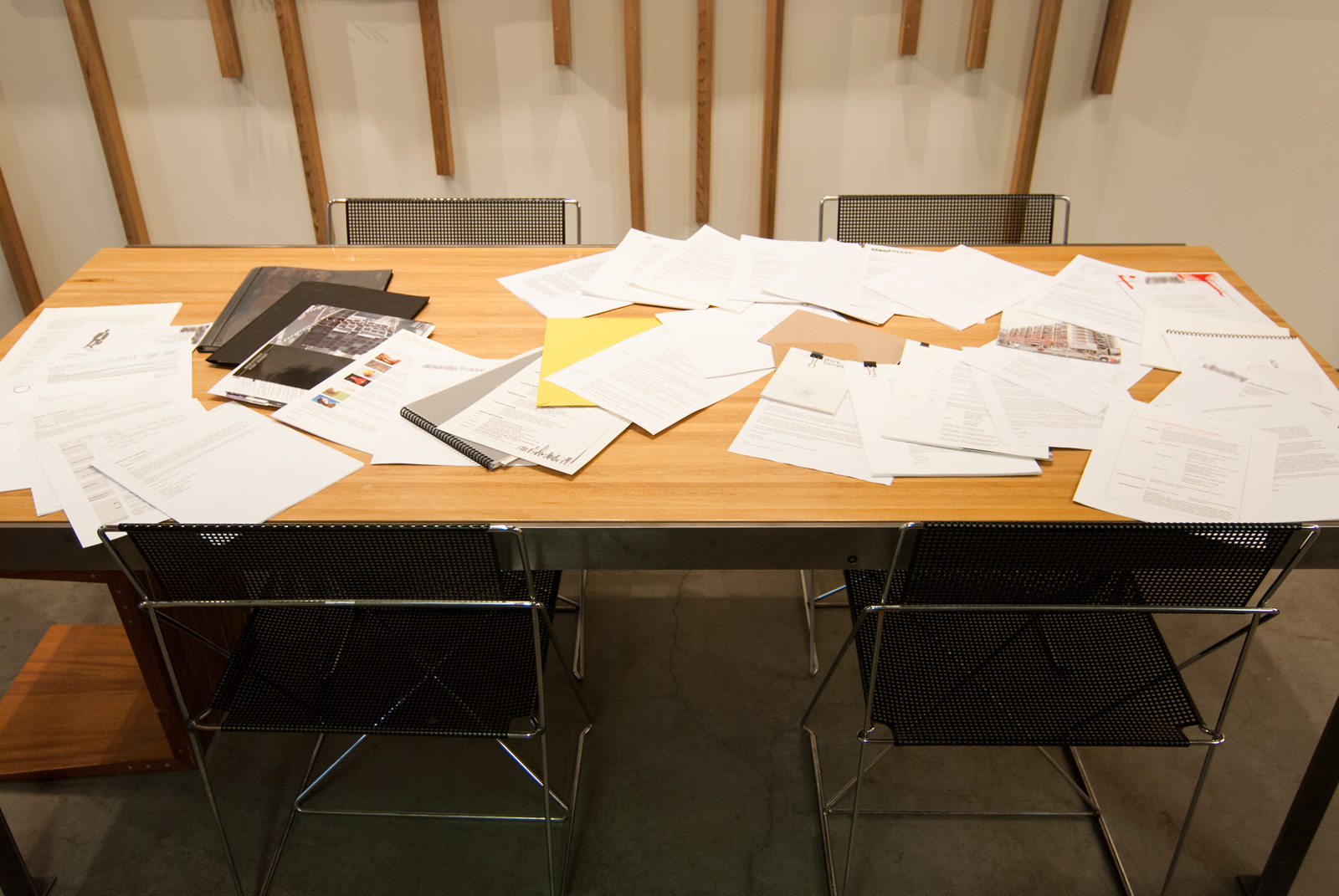
We received an interesting email the other day. A good friend of ours was looking for a hard working, dedicated young architect to provide some horse-power and design savvy at his architecture practice. He knows we get a ton of resumes and was wondering if we could forward a few of the best candidates his way. Glad to, we said, and we got to work looking through our resume file.
Our current file is thick to the extent that it’s a bit daunting. The good news is that it indicates a wealth of talent around us. The bad news is that it’s challenging to filter through hundreds of submissions and select only a handful to forward on. The process ended up being an excellent exercise in defining the requirements of a resume in the information age. Granted, this is just our process of sorting, but if you’re out there looking for work in the current economy, we find it hard to believe that these requirements wouldn’t be important considerations in any design-related field. The following items were the criteria we used to narrow down the stack to a handful of highly suitable candidates. In order of importance:
1. Is the package of information clear and concise?
The most successful applications use the classic trifecta:
+ A one page cover letter with a brief intro (a paragraph or two) with a bit of humor thrown in for good measure. Maybe include a line or two relating to BUILD specifically – do we have an architecture school in common, did you attend a lecture of ours, did you study abroad where we did? We don’t need to hear that you’ve dedicated your life to architecture – anyone who made it through architecture school has.
+ A one page resume with the relevant information: education, professional experience, accreditations. To us, a resume should be everything it needs to be and nothing more–we’d rather see blank space than fluff (and we know fluff when we see it).
+ A couple of pages of your best work. Part of being a good designer is knowing how to edit; what you don’t show is just as important as what you do. Use that well-trained design eye to filter your work down to its essence.
Tip: When we get physical resumes and portfolios in the mail we tend to hang onto them more often (as opposed to emails). We’re not sure why this is; maybe it’s too easy to blast everyone in town with an email, maybe we still appreciate the touch and feel of paper, or maybe it shows that you went the extra mile.
2. Is there a representation of your work on the internet?
If you don’t have your work up on the world wide web, we’d like to welcome you to the 21st Century. Having your work online not only gives us quick access to your portfolio, it also lets us know that you’ve got some digital internet skills (a must in a small design firm). There are tons of free platforms on the internet to stake out some ground, put some images up and start getting some global traction. The web address to your digital information should be clearly indicated on your cover letter, resume and portfolio. Your digital presence should include a copy of your resume in addition to your portfolio. In a nutshell, we should be able to send a name and a link to our buddy (who’s hiring) with all of your relevant data.
Tip: Honor an employer’s time by not making them hunt for this information. If we have to do a Google search on you to see if you even have an online portfolio, you’ve probably already been passed up by dozens of other applicants that have this base covered.
3. Is the information readily accessible?
A couple of physical pages from your portfolio are far more successful than enclosing a thumb-drive with digital information. We rarely have time to screw around with the various digital formats, unknown amounts of data that may paralyze our laptops, and any other curveballs that may be waiting in that harmless looking thumb-drive.
Tip: If your work is online (see #2) you shouldn’t need to enclose a thumb drive. You can always use the belt and suspenders method of sending a few physical portfolio pages to whet our appetites and a link to your full online portfolio.
These 3 factors were recently used to filter 100+ resumes down to 5. It’s a tough economy, no doubt. But there’s work out there if you’re persistent, mindful and in the game. For more on the topic, check our earlier How to *Really* Get Hired blog post.
Cheers from Team BUILD





